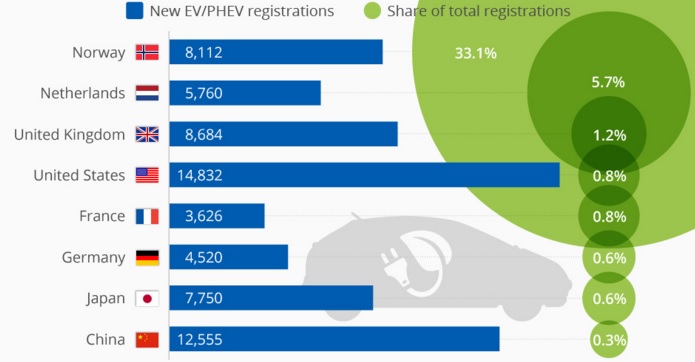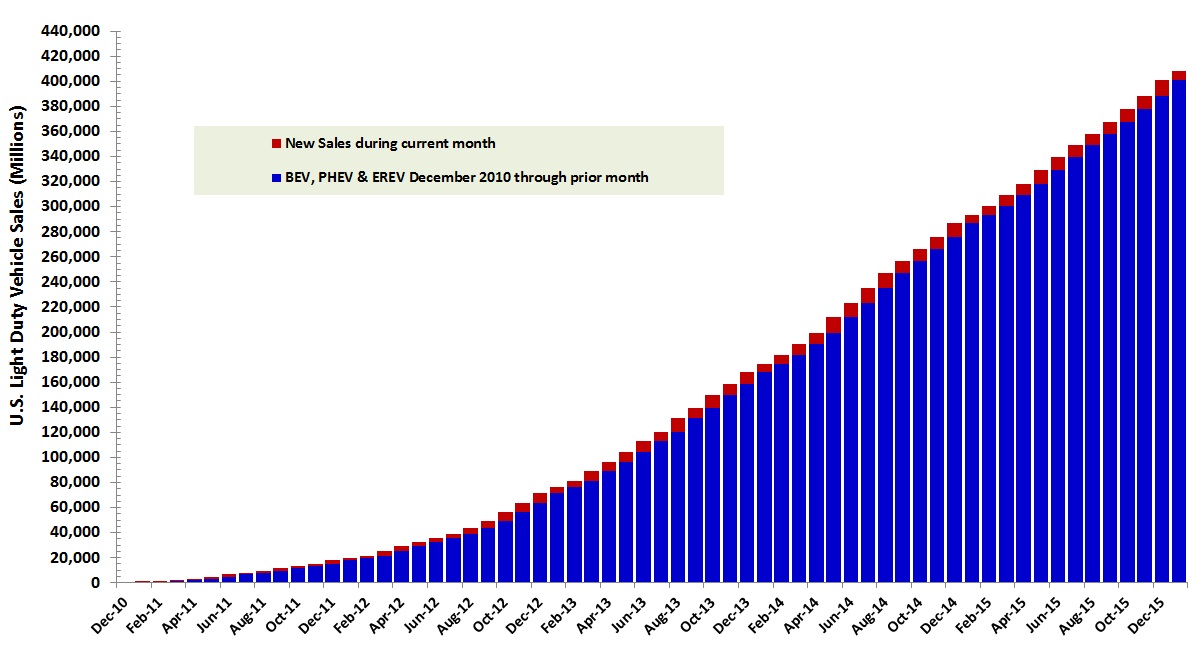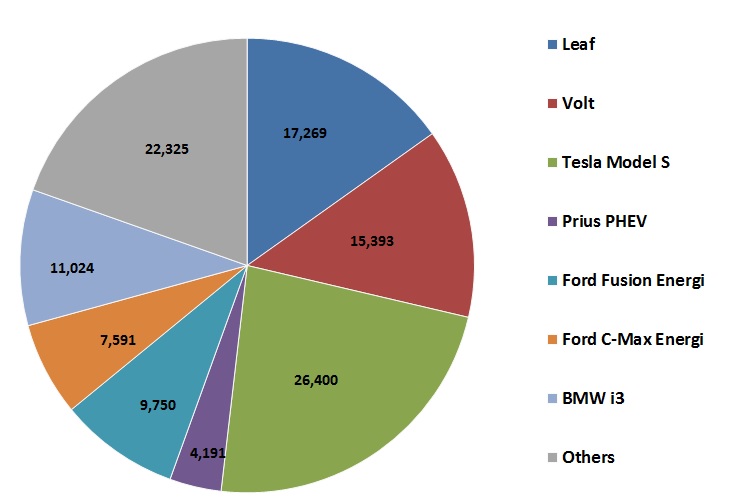Shifting gears, but Australia still in first
Australian Electric Vehicles (EV) sales quadrupled in 2014 due to improved model availability, better technology and pricing choices, as well as emerging long-haul charging infrastructure, according to a new report by Energeia called “Shifting Gears: The Australian Electric Vehicle Market to 2030 - A Private Report for Strategic Research Service Clients”.[i] Despite this increase, overall numbers continue to remain insignificant with EVs representing only 0.1 per cent of overall vehicle sales. However, the building blocks for demand inflexion are on the horizon[ii].
A look at Australia
In Energeia’s previous 2013 report, Australia's EV market was forecast to contribute 6.5 per cent of new sales by 2022. The current Energeia forecast, based on an updated EV uptake model, sees them represent 7.7 per cent of new sales by 2022, and 300,000 overall vehicle sales by 2030, a 22 per cent penetration rate[iii].
The current Energeia projections estimate an Australian EV fleet of 2.2 million vehicles, consuming 4.4 TWh of electricity annually, 2 per cent of the National Electricity Market, which represents 79 GWh of potential battery storage by 2030. The key Australian EV market developments anticipated in the Energeia report include:
1) Rapid expansion of DC fast charging networks along Australia’s major transit routes
2) The availability and widespread adoption of wireless charging technology due to its superior convenience
3) The rise in EV driving among renters and apartment dwellers through car sharing networks
4) The emergence of specialised EV load shaping businesses providing valuable services to customers and industry[iv].
Australia’s current EV market winners are Tesla, Mitsubishi and ChargePoint. Energeia expects a wave of Original Equipment Manufacturer (OEM) fast-followers to emerge over the next five years, leading to wider vehicle choices for customers. Beyond the DC fast charging and car share rollouts, long-term success in the charging space will require the right business model[v].
Emissions from motor vehicles
The need for more EVs is also underlined by the recent vehicle emissions discussion paper released by the Australian Government to promote cleaner vehicles. Energeia notes that Australia has not set a new fuel efficiency targets since 2010 and that the country’s existing targets are now the softest of its major trading partners. The Australian Government's discussion paper seeks views on measures to achieve its 2030 greenhouse gas emissions reduction target of 26-28 per cent on 2005 levels by 2030 with a focus on road vehicles[vi].
Emissions from motor vehicles can have a significant impact on human health and the environment according to the Government paper. They can be broadly categorised into two types, noxious emissions and greenhouse gas emissions. While motor vehicles are not the only contributors of noxious emissions in Australia, the paper highlights that they are main contributor to emissions of oxides of nitrogen in Australian cities and a significant contributor to emissions of hydrocarbons[vii].
Behind electricity generation, domestic transport accounts for 17 per cent of Australia’s greenhouse emissions in 2013-14 with approximately 60 per cent of transport sector emissions coming from light vehicles. Globally, the transport sector accounts for approximately 14 per cent of greenhouse gas emissions[viii].
Compared to the rest of the world
Despite the strong performance in 2014, overall Australian EV adoption remains low compared to other industrialised nations, in terms of vehicle market share and the deployment of public charging infrastructure[ix].
Norway and the Netherlands are the leading markets for EVs sellers. A key reason is their provision of subsidies of up to A$30,000, while in Australia government support for EVs is under A$1,000, according to the Energeia report[x].
It is worth noting that Norway could be a victim of its own success with the generous subsidies and in some cases exemptions from tolls leading to a tax shortfall of 2 billion crowns ($US 267.79 million), Reuters[xi] reports.
In the first quarter of 2015 there were more than 8,000 plug-in electric and plug-in hybrids EVs sold in Norway, representing a third of all vehicle registrations. During this period, Norway’s share of registrations was 33.1 per cent while in the Netherlands it was 5.7 per cent.
Figure 1: Q1 2015 New EV/PHEV registrations and Share of total registrations[xii]

EV sales continue to increase in the United States, with vehicle numbers surpassing 400,000. During January 2016 alone 20,967 hybrid EVs and 6,713 plug-in vehicles were sold. Much like Australia, the Tesla continues to be the most popular vehicle across the US[xiii].
Figure 2: Cumulative U.S. Plug-In Vehicle Sales[xiv]

Figure 3: US Annual Sales by vehicle in 2015[xv]

EV uptake in Australia has been relatively slow so far but whether or not it does start to take off here will depend on how stakeholders such as the energy industry, vehicle manufacturers, governments and charging providers work together to facilitate EV uptake. Removing barriers to entry and providing better charging options could all help to encourage more vehicle manufacturers to enter the Australian market.
[i] Energeia, 2016, “Shifting Gears: The Australian Electric Vehicle Market to 2030: A Private Report for Strategic Research Service Clients”
<< http://energeia.com.au/wp-content/uploads/2014/02/Shifting-Gears-The-Australian-Electric-Vehicle-Market-to-2030.pdf >>
[ii] ibid
[iii] ibid
[iv] ibid
[v] ibid
[vi] Australian Government, 2016, “Vehicle Emissions Discussion Paper”,
<< http://www.environment.gov.au/minister/hunt/2016/pubs/mr20160211.pdf >>
[vii] ibid
[viii] ibid
[ix] Energeia, 2016, Op. Cit
[x] ibid
[xi] Reuters, 2015, “Norway reviews car taxes, reaffirms electric subsidies after boom”, << http://www.reuters.com/article/norway-autos-idUSL5N0Y330020150512 >>
[xii] Niall McCarthy, 2015, “Norway Leads The World's Electric Vehicle Market”,
<< https://www.statista.com/chart/3677/norway-leads-the-worlds-electric-vehicle-market/ >>
[xiii] Argonne National Laboratory, Center for Transportation Research
<< http://www.transportation.anl.gov/technology_analysis/edrive_vehicle_monthly_sales.html >>
[xiv] Source: Argonne National Laboratory, Center for Transportation Research
<< http://www.transportation.anl.gov/technology_analysis/edrive_vehicle_monthly_sales.html >>
[xv] Source: Argonne National Laboratory, Center for Transportation Research
<< http://www.transportation.anl.gov/technology_analysis/edrive_vehicle_monthly_sales.html >>
Send an email with your question or comment, and include your name and a short message and we'll get back to you shortly.



